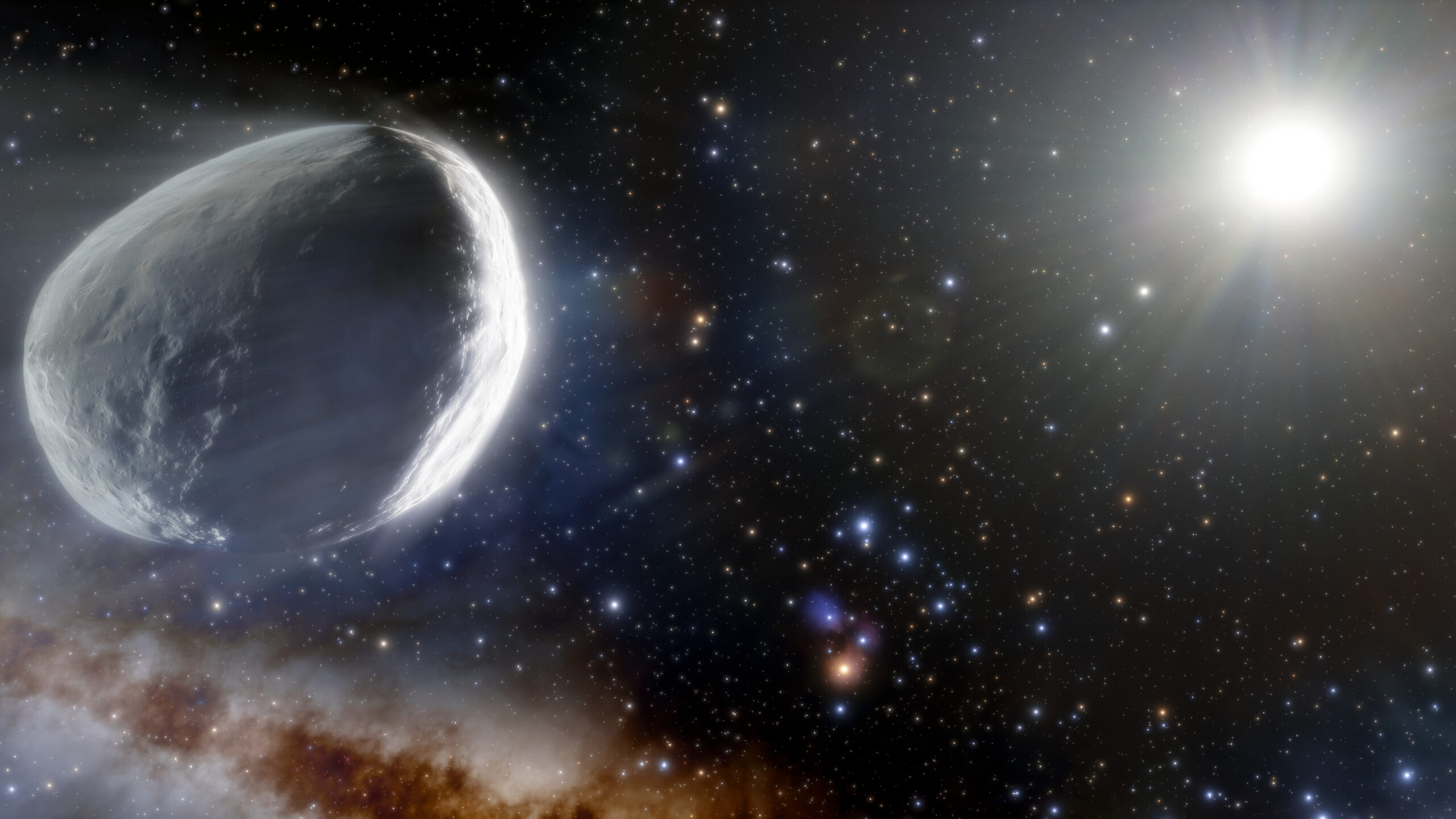In 2004, astronomers found a deadly asteroid lying in space, whose impact might bring as much harm to Earth as the Chicxulub impactor did 66 million years ago, when it wiped out the entire population of non-avian dinosaurs. Initially dubbed 2004 MN4, this 340-meter-wide rock 170 million kilometers from Earth did not appear to be particularly intriguing. However, the research soon revealed that it had a 1 in 37 chance of striking Earth in 2029. This is the greatest calculated likelihood of a significant asteroid impact ever recorded in human history. The rock was considered to be the most deadly asteroid ever detected. The asteroid was subsequently called Apophis, after the Egyptian monster of destruction and chaos. Apophis performed a distant flyby of the Earth in March 2021, and astronomers utilized strong radar measurements to update the estimations of its orbit around the Sun with remarkable precision.
In 2029, it will be approximately 32,000 kilometers from Earth. As a result, it will pass beneath the orbits of geostationary satellites. Consequently, it will look as bright as a satellite and become visible to billions of naked-eye observers worldwide. Astronomers do not want to miss this opportunity, as such interactions are believed to occur just once every few thousand years. Consequently, they have proposed possible exploration expeditions of Apophis during or around its passage in 2029. NASA’s OSIRIS-REx will be the first verified mission to this rock. An identical spacecraft was launched in 2016 on a mission to retrieve samples from the asteroid Bennu. The OSIRIS-REx landed on Bennu’s surface on October 20, 2020 and successfully obtained a sample; the probe is currently returning to Earth. In September 2023, the spacecraft is slated to deliver the important samples acquired from Bennu. However, space exploration by OSIRIS-REx will continue. The spacecraft will continue to travel through space after receiving a $200 million extension to its initial mission, thus beginning its voyage to Apophis and becoming the OSIRIS–Apophis Explorer (OSIRIS–APEX). After transferring the sample gathered from Bennu to Earth, the spacecraft will undertake its initial maneuver toward Apophis within 30 days.
It will enter Apophis’ orbit shortly after the asteroid’s Earth flyby in 2029. OSIRIS-APEX will spend 18 months studying the asteroid and collecting data along the way. In contrast to Bennu, there are currently no plans for the probe to acquire a surface sample from Apophis. However, it will approach the asteroid’s surface and fire its thrusters in order to uncover Apophis’ subsurface in order to learn more about the asteroid’s physical and chemical properties. OSIRIS-APEX will aggressively monitor the asteroid’s surface for a year and a half so that mission scientists can search for any interesting changes caused by Apophis’ brief encounter with Earth’s gravity. Even if the tidal forces are tiny, they can nevertheless induce minor landslides and expose new asteroid material for research. In addition, the spacecraft will determine the orbital velocity of the rock with meter-scale accuracy. This will help researchers to determine Apophis’s future trajectory with more precision.
Currently, only projections till 2116 are possible. However, OSIRIS-APEX observations are anticipated to greatly extend such estimates. The mission will also examine Apophis to gain a comprehensive understanding of the Yarkovsky effect. The Yarkovsky effect is a phenomenon in which uneven solar heating can impact the course of an asteroid through space. So, the spacecraft will assess the potential changes in the asteroid’s orbital velocity and spin resulting from its 2029 Earth flyby, enabling scientists to gain a deeper understanding of the ramifications of this influence on more asteroids. However, OSIRIS-APEX will not be the only spacecraft to visit Apophis. Multiple missions have the same objective. The South Korean team has presented one of the candidates; they intend to launch a spacecraft in 2027 that will reach Apophis in January 2029, right before its Earth pass. The mission intends to gain a better understanding of the asteroid’s structural changes as a result of its close approach to Earth. Then, missions with smaller spacecraft, such as the Apophis Pathfinder, were proposed.
This spacecraft will launch between 2025 and 2026 and will conduct the first-ever close flyby of Apophis by arriving at the asteroid roughly one year after launch. Perhaps some private astronauts would consider flying up to the asteroid to witness it with their own eyes. It is a long shot, but not impossible. A thorough examination of Apophis will facilitate a greater understanding of the numerous hazardous asteroids that threaten humanity. In addition, these missions will represent a phenomenal advancement in our understanding of Apophis’s behavior, allowing us to design effective defense measures against such attacks. Geologists have just determined that the asteroid that wiped off the dinosaurs was not alone. Instead, it was accompanied by an object whose impact produced the recently found Nadir Crater. It is about 9 kilometers around and is about 350 kilometers from the coasts of the African countries of Guinea and Guinea-Bissau.
![]()
